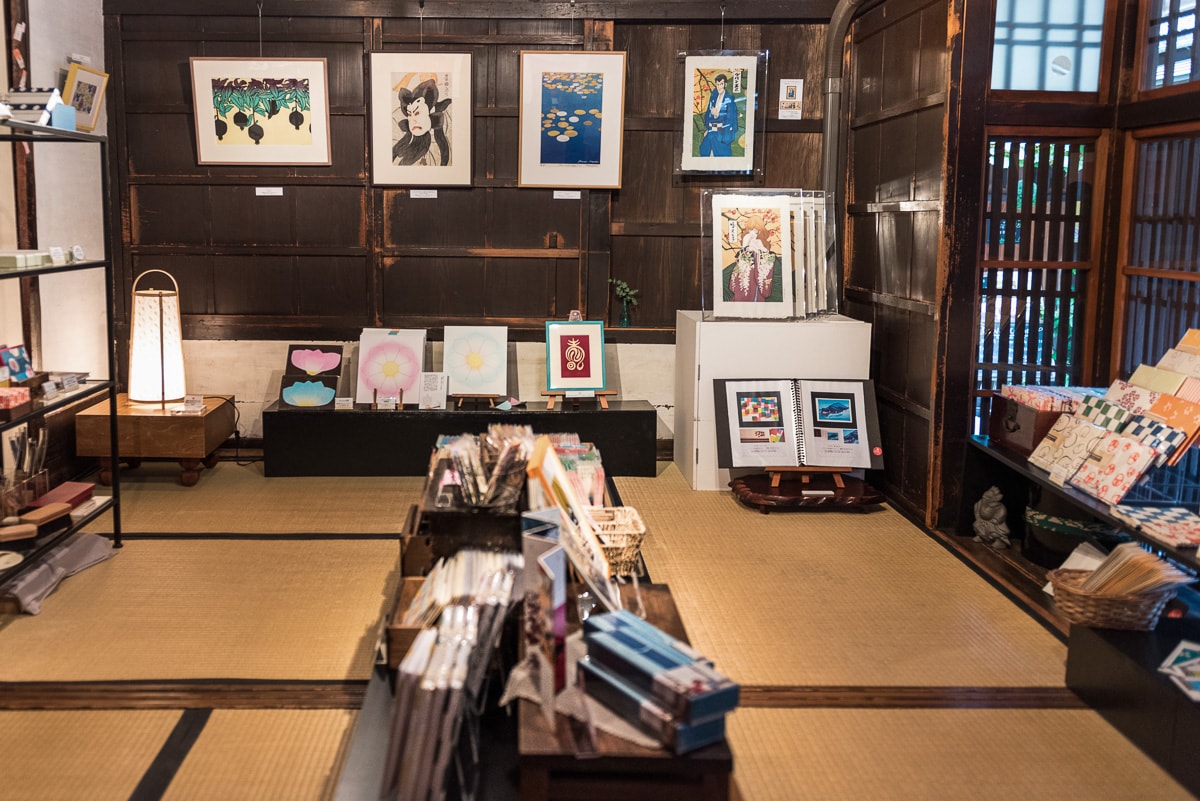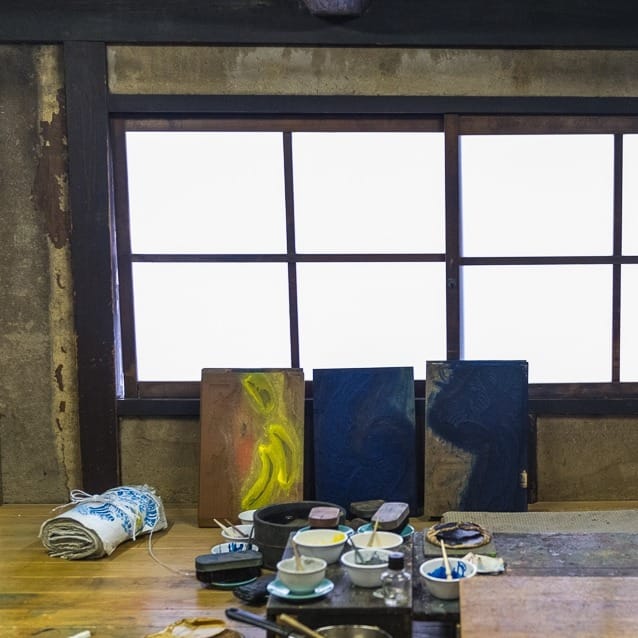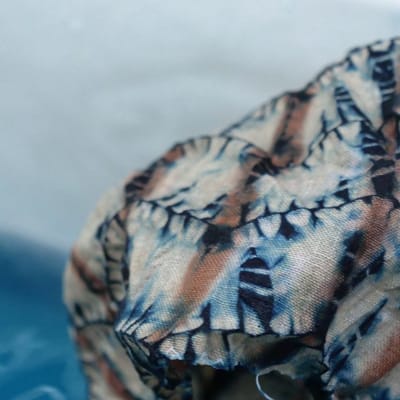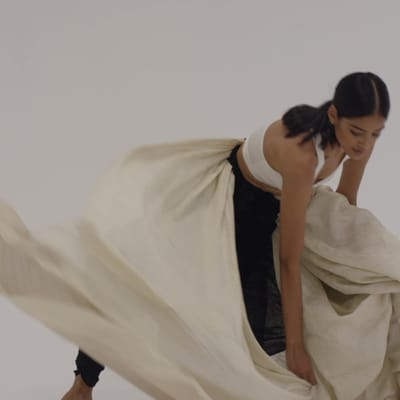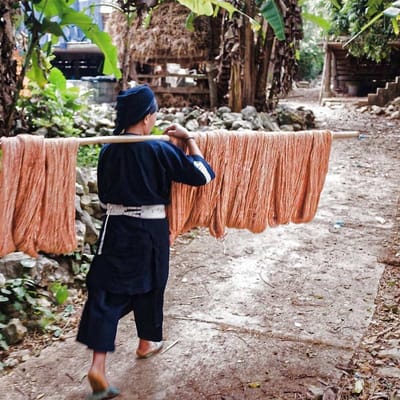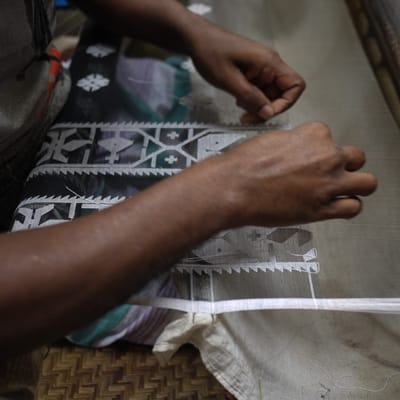“Living only for the moment, turning our full attention to the pleasures of the moon, the snow, the cherry blossoms, and the maple leaves; singing songs, drinking wine, diverting ourselves in just floating, floating; caring not a whit for the pauperism staring us in the face, refusing to be disheartened, like a gourd floating along with the river current: This is what we call the floating world.” ~Ukiyo Monogatari ('Tales of the Floating World')
* * *
His sorrowful world. This floating world. “Ukiyo” is a Japanese phrase that describes the transitory nature of existence but which, by the beginning of the 17th century, had developed two distinct interpretations: Its original meaning was steeped in Buddhism, a call to devote one’s life to spiritual matters. But the other was playful, worldly — sometimes hedonistic. Instead of restraint, it encouraged an embrace of life’s many pleasures while one could.
The style of art called Ukiyo-e (literally “Pictures of the Floating World”) which emerged from that cultural redefinition produced some of Japan’s most notable artwork. It also reflected a change in artistic thinking: Woodblock printing, which had been originally reserved for Buddhist seals and images, began to portray everyday scenes of urban life — and burst from monochrome into vivid color palettes.
Contributor Laura Wheatley visited Takezasado, a woodblock printing studio in Kyoto which is both continuing and, itself, redefining the tradition of Ukiyo-e. Join us as The Kindcraft looks at the history, the tools, and the extraordinary techniques of this quintessentially Japanese heritage craft.
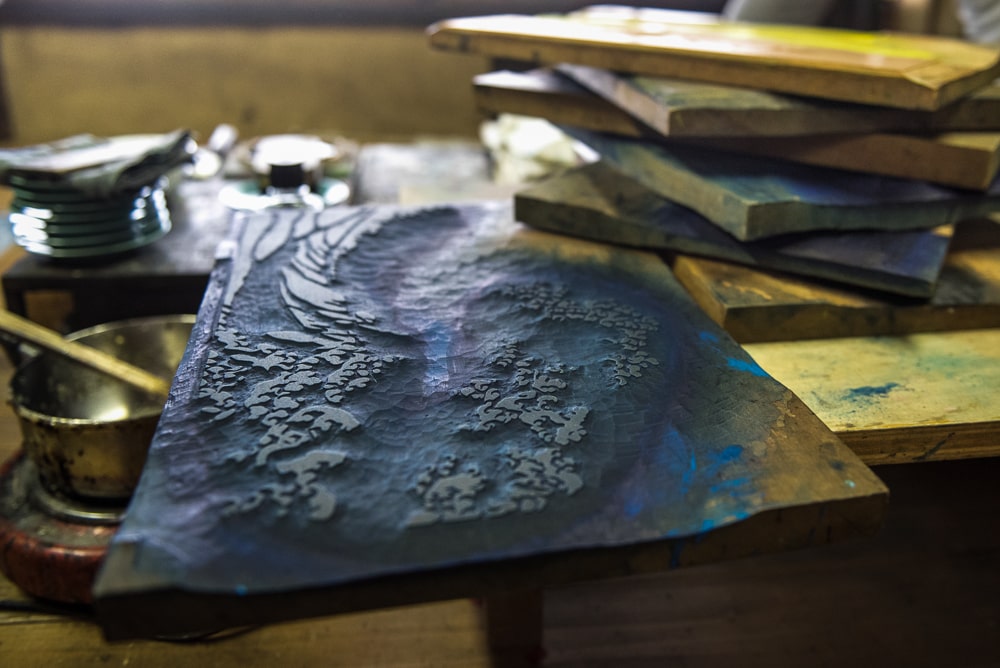
The art of ukiyo-e was born during Japan's Edo period. Stemming from techniques developed during the earlier Heian period, the color palettes used in this style of woodblock printing (called mokuhanga) were originally achieved through the use of plant-based indigo ink, referred to as hon ai.
A little more than 200 years ago, though, the technique began to shift: Chemical inks from Germany began to be imported to Japan. This approach was less time-consuming and more consistent, yielding brighter colors than the hon ai palette.
Today, some woodblock printers use a hybrid of both imported chemical ink and the hon ai to achieve a unique product. One of those is Kyoto's internationally-acclaimed studio, Takezasado. Established in 1891 under the name “Takenaka Mokuhan”, it produced traditional woodblock prints made by hand – a process passed down through each generation based on the techniques used over 1,200 years prior.
Under the direction of Mr. Kenji Takenaka, a fifth generation master printer, the company started Takezasado as a new venture and it began making its own papers in 1999. In recent years, Takenaka has also created a product line called "MOKUHAN", which aims to extend Takezasado’s woodblock designs onto new materials (such as textiles and bamboo) and into new markets like interior decor and smartphone cases.
The studio is currently run by Mr. Seihachi Takenaka, a fourth generation master printer with 65 years of experience in the art of woodblock printing, who joins Kenji Takenaka and another master printer, Ms. Yuko Harada. They are assisted by printers Ms. Akane Mori and Mr. Daiki Nagai, as well as an engraver, Mr. Kazuki Nojima. Besides producing a stunning array of woodblock print products, the Takezasado team delivers lectures all over the world, demonstrating their process and unique approach to creating modern printmaking styles.
A Visit to Takezasado
A narrow road, only accessible by foot or bicycle, led me to the Takezasado studio, where I was met by my interpreters. There was a sense of beauty in the aged wooden structure, a building which looked as though it had been there for more than a hundred years.
We passed through the noren hanging in the entrance and removed our shoes before stepping onto the tatami mat. Tea had been prepared for us in the next room and there was a quaint garden blooming in a courtyard, just outside the sliding doors. We were met by Kenji Takenaka and told that he would conduct a special demonstration for us: A recreation of artist Katsushika Hokusai’s famous ukiyo-e print, ‘The Great Wave off Kanagawa’.
To reach the studio workspace, we followed Mr. Takenaka up a staircase so incredibly narrow and inclined that we literally had to climb it – quite an exciting start to the performance we were about to witness! Minding our heads, we found ourselves in a cozy room with a low ceiling. A single window-lit table was centered in the back, surrounded by various tools and a stack of wooden boards. Colorful jars were arranged neatly on a wooden shelf against the wall which, as I later learned, contained various shades of powdered dyes.
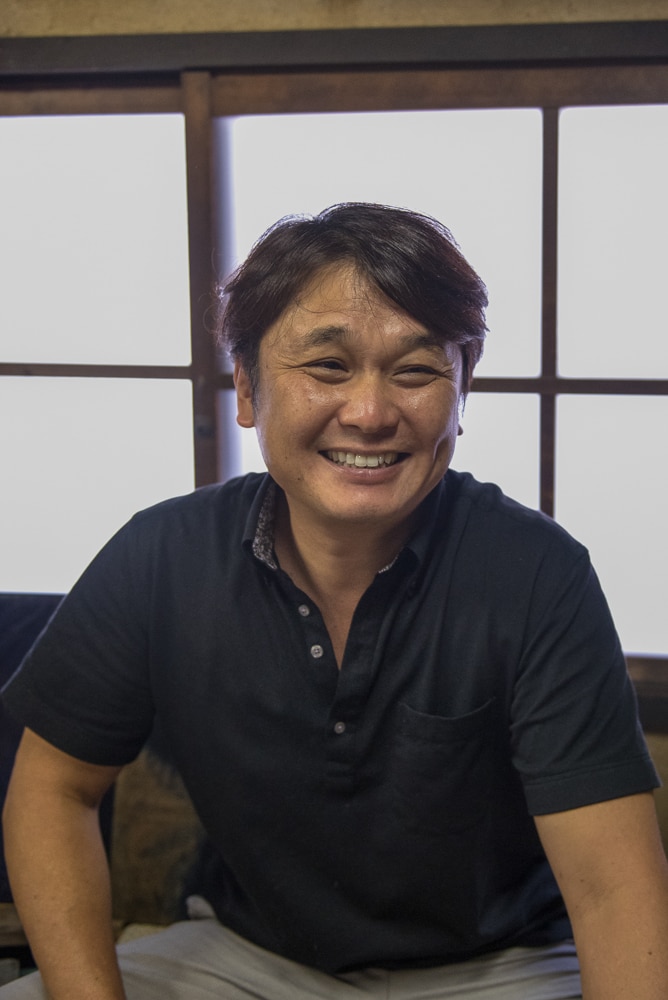
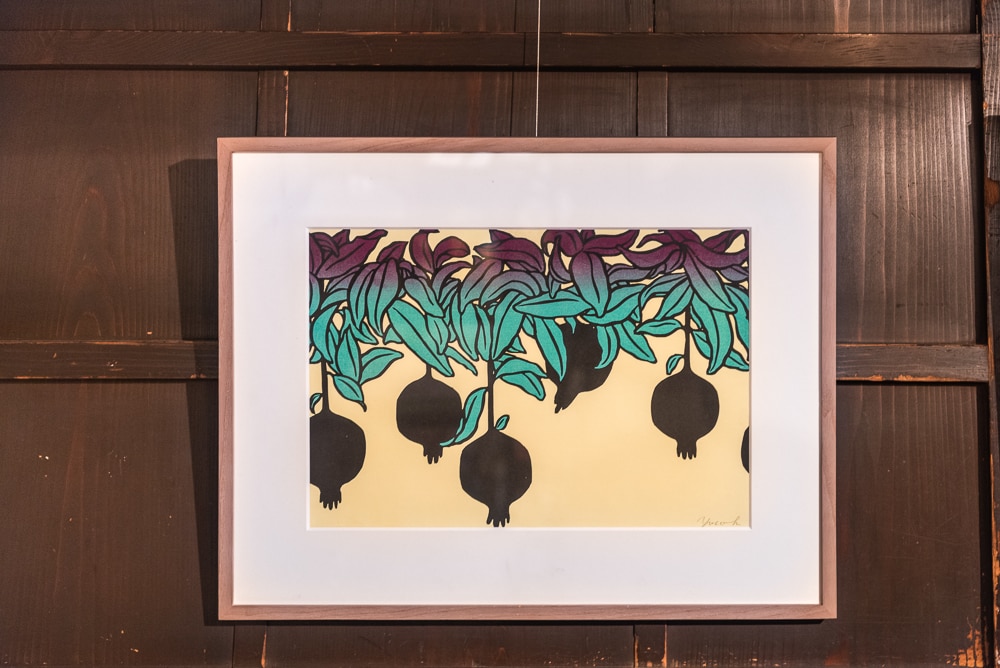
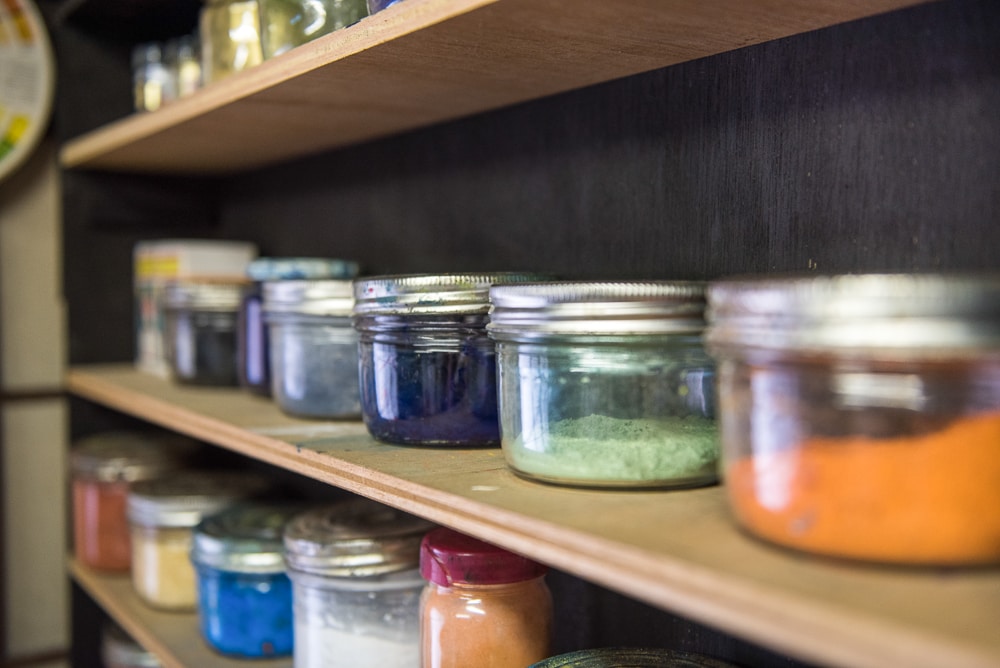
Materials and Printing Processes
Mr. Takenaka held up one of the woodblock panels and explained that the wood of a sakura - also known as a cherry tree - is used for most mokuhanga. The durability of this species makes it an ideal choice, he said, considering that thousands of impressions might be made. The tight grain of the sakura is often preferred for prints which have fine lines and detailed drawings, but Magnolia and Japanese Judas trees are also suitable for the woodblock printing process.
In the upper corner of a panel, characters written on the wood detail the color of ink to be used for that specific step of the process. Pulling one of the jars off the shelf, Takenaka described how water is mixed with these powdered pigments to create the paint. In European countries, he said, they must use oil-based paints to retain the moisture because their climate is less humid than Japan.
The first step of the woodblock printing process is to brush the carved surface of the wood panel lightly with water to moisten it. After Mr. Takenaka demonstrated this, he dipped a brush into a small dish and mixed the contents before loosely painting a rich blue hue onto portions of the board. He then took a horsehair brush and moved it across the panel in a circular motion, distributing the paint evenly. A glue made from a rice starch paste (called “nori”) is dabbed on next to ensure that the ink is “spread flat”, allowing the color to be applied uniformly.
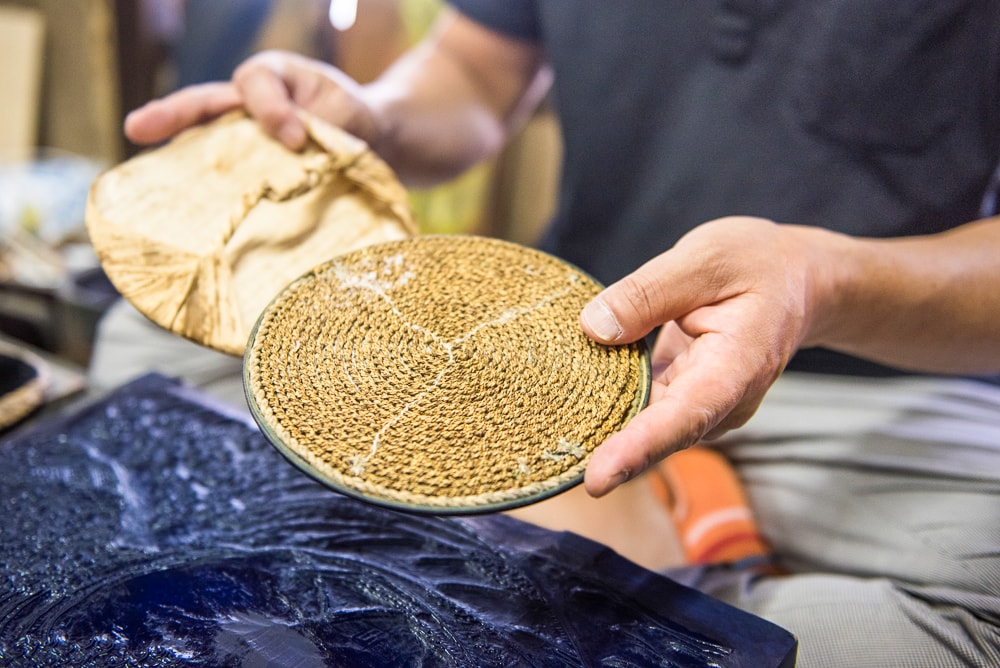
Before setting the hosho paper on top of the panel, Takenaka showed us a tool essential to the process: The baren is a disk-shaped tool comprised of three pieces: An outer sheath of bamboo skin that is twisted to create a handle for the artisan to place their hand through, a disk known as an ategawa made up of 40-50 sheets of layered paper, and shredded bamboo fibers fastidiously tied into a braided cord, coiled up inside it all.
We watched in fascination as he expertly aligned the hosho paper onto the panel using carved guides called kento. Mr. Takenaka placed his hand on the baren and, with quick and deliberate movements, guided the tool in a circular motion. Lifting the baren up and setting it aside, he removed the paper, flipping it in the air before setting it before us. The level of detail in the outline was astounding, as was the consistency of the ink spread across the paper. He continued this process several more times with the same sheet of paper, each time adding a new element and color — perfectly aligned.
On the second-to-last step of the process, he performed a technique called “fuki-bokashi”. Using a tenugui cloth to create a gradient effect, the long towel is wrapped completely around a thin piece of wood before being dampened with water and moved horizontally over the top of the panel. The glue brush is then pulled down in a line perpendicular to the first movement and a black pigment is added before using the horsehair brush to wipe horizontally over the darkest part. This action creates a seamless gradient in the background, giving even more depth to the print.
It's a testament to the artistic genius of Katsushika Hokusai that there are only eight colors used in ‘The Great Wave off Kanagawa’, in contrast to many other artists of his time who often used around ten or eleven. The final print is truly exquisite — and the level of skill required to produce this woodblock print was so stunning — that I felt compelled to ask Mr. Kenji Takenaka how long he had been performing his craft.
He laughed. “Since I was born”, he said.
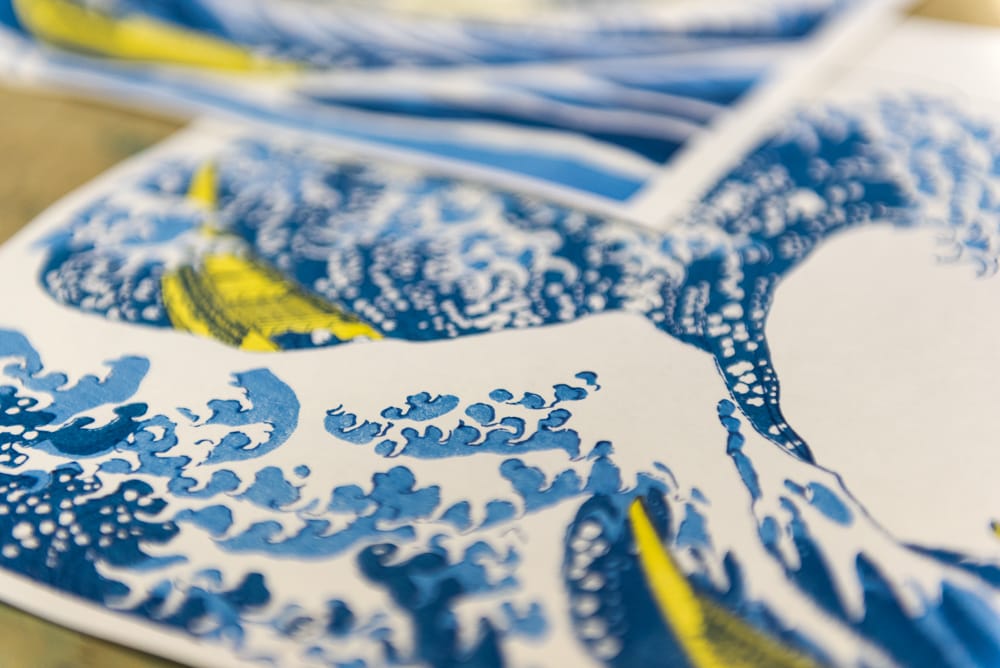
Mount Fuji Erupts!
His next words shocked me: “You can try it now, if you like.”
I hadn’t anticipated this and, at once, my gleeful inner child was pitted against my adult caution at playing with some very expensive tools that I did not wish to break. With some coaxing, though, I found myself sitting where Mr. Takenaka had been just moments before. With his guidance, I tried my hand at the the outline woodblock – it was exhilarating!
When I lifted the paper up to see how I had done, there was a dab of excess paint above Mount Fuji. Everyone exclaimed “It erupted!” — and we all began to laugh.
As our visit came to an end, we thanked Kenji Takenaka for his beautiful ukiyo-e demonstration, to which he replied, “okini”. Having never heard that word before, I turned to my interpreters, who explained that the phrase is how the people of Kyoto say “thank you” in their own dialect.
With many exchanges of “okini”, we headed down to the Takezasado shop before going our separate ways — though the experience and beauty of the art would linger in my thoughts for quite some time.
